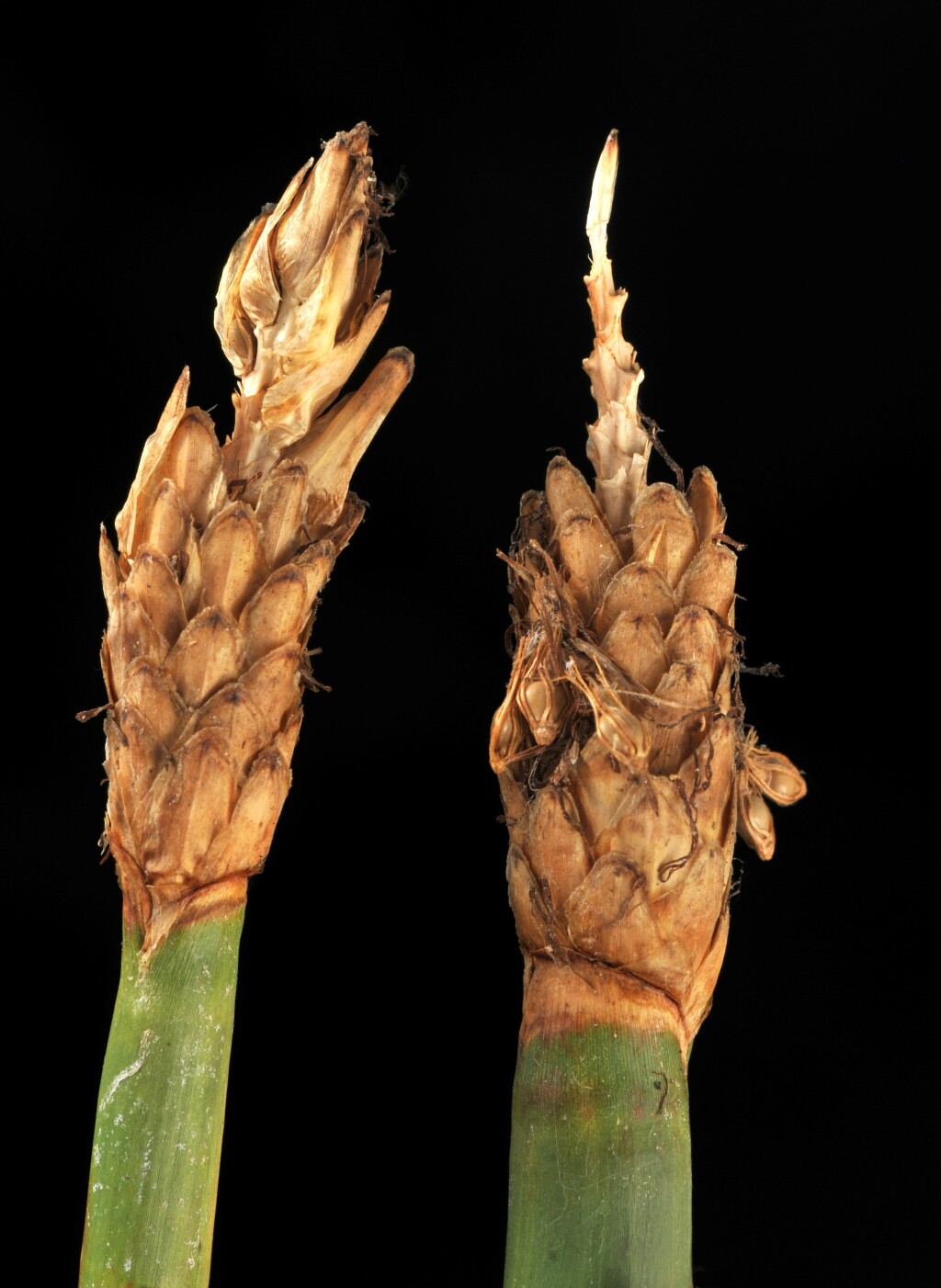Eleocharis
Annual or perennial herbs, often rhizomatous. Culms usually tufted, erect or spreading, terete to acutely angled or flattened. Leaves reduced to bladeless tubular sheaths often bearing a short erect apical mucro. Inflorescence a terminal, ebracteate, single spikelet, sometimes proliferating. Spikelet terete or angular, rarely compressed, few- to many-flowered; rachilla persistent; glumes spirally arranged, sometimes subdistichous, caducous; flowers bisexual; hypogynous bristles 6–10, smooth or retrorsely or rarely antrorsely scabrous or toothed, sometimes reduced, rarely absent; stamens 1–3; style 2–3-fid, usually glabrous, articulated with the nut, the enlarged base persistent on nut. Nut trigonous or lenticular, obovoid, orbicular, or obpyriform, sometimes with a narrow neck just below the apex, crowned by the enlarged style-base.
About 150 species, cosmopolitan; about 30 species in Australia.
Some species are used for matting. Eleocharis dulcis is cultivated for its edible tubers ('Chinese Water Chestnut').
Wilson, K.L. (1994). Cyperaceae. In: Walsh, N.G.; Entwisle, T.J., Flora of Victoria Vol. 2, Ferns and Allied Plants, Conifers and Monocotyledons, pp. 238–356. Inkata Press, Melbourne.
 Spinning
Spinning


